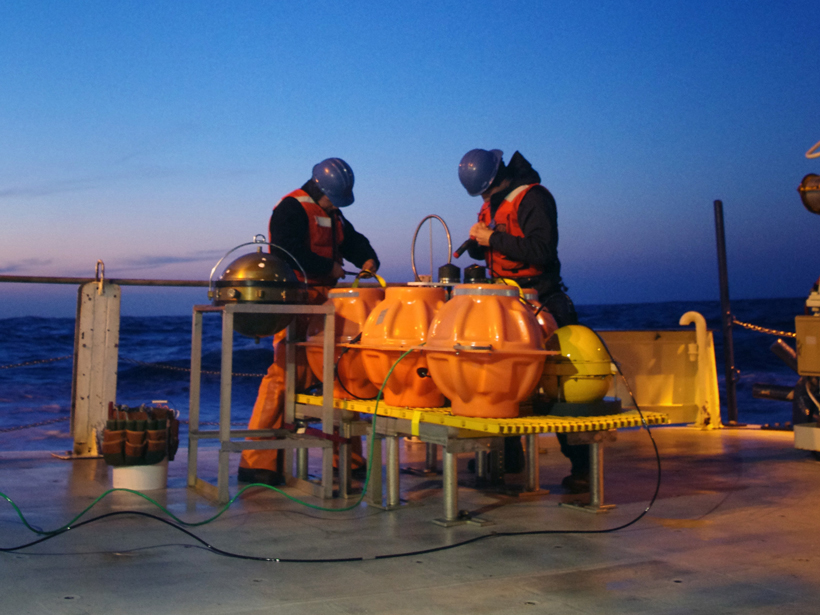Source: Geophysical Research Letters
On 28 October 2012 the Haida Gwaii earthquake (magnitude 7.8) struck off the coast of British Columbia. Tsunami warnings triggered coastal evacuations in Canada, the northern United States, and Hawaii, but no deaths or significant structural damage occurred. Those tsunami warnings were generated by traditional methods that rely on a fault model of the tsunami source. Now Gusman et al. suggest that source data may not be necessary for real-time tsunami forecasts.
The researchers compiled Haida Gwaii tsunami data from dozens of ocean bottom seismometers, equipped with pressure gauges, that had been installed offshore of Oregon and California. Spaced 10 to 50 kilometers apart, these gauges directly sense a passing tsunami wave, providing much denser data than are normally collected for tsunamis. The authors used these data to compare two different forecasting methods.
In the first method, the scientists used pressure gauge data and a fault model to estimate the locations of fault slip that caused the tsunami. This allowed them to calculate sea surface displacement and simulate tsunami size and timing. The second method ignored the earthquake source. Instead, pressure gauge data continuously fed and refined a wave field model that predicted the tsunami’s movement.
When the researchers compared the simulations with observations of the Haida Gwaii tsunami, they found that both methods accurately forecast tsunami timing and amplitude, with a warning time of 30 minutes or more. The success of the second method suggests that with a dense enough sensor array, real-time tsunami predictions do not require a fault model. (Geophysical Research Letters, doi:10.1002/2016GL068368, 2016)
—Sarah Stanley, Freelance Writer
Citation: Stanley, S. (2016), Streamlining rapid tsunami forecasting, Eos,97, doi:10.1029/2016EO052675. Published on 23 May 2016.
Text © 2016. The authors. CC BY-NC-ND 3.0
Except where otherwise noted, images are subject to copyright. Any reuse without express permission from the copyright owner is prohibited.

